culture and History Travel Tour to Fiji
Fiji islands overview
Fiji were known as the "cannibal islands" because they believed that their people were fierce and unfriendly. Unfortunately, its recent political history of coups d'etat has helped many travelers to change their minds. Despite this, Fiji is a beautiful place that enjoys a pleasant tropical climate. Here you can enjoy the practice of various activities such as scuba diving and snorkeling, and it has excellent tourist facilities, both for  travelers with limited budget and for those seeking more luxurious vacations.
travelers with limited budget and for those seeking more luxurious vacations.
The history of the islands is unique in the spectrum of the Pacific, which has led to the current melting pot of influences Melanesian, Polynesian, Micronesian, Indian, Chinese and European. For almost fifty years until the military coup of 1987, the indigenous people of Fiji represented only a minority in their own land. During the nineteenth century, the islands became the commercial center of the South Pacific and in 1874, were claimed by the British as a colony. During the approximately one hundred years that Fiji remained under the control of the British colonial government, some ten thousand Indian workers were recruited to work in sugar plantations. Nevertheless, the indigenous Fijians managed to maintain their traditional rites and practices, such as mekes (narrative dances), constructs Bure (home), kava ceremonies, and the development of tissues and ceramic lid.
Fiji Best time Travel to
The mild tropical climate of Fiji became the tourist destination throughout the year and the perfect place to escape the winter in both hemispheres. Probably the best time to visit is during the dry season or "winter" from May to October, offers cooler temperatures, precipitation lowest, a lower degree of humidity and less risk of tropical cyclones.Fiji Mean festivals and Holidays
The New Year is celebrated in Fiji with particular enthusiasm in some people, the party can last for almost a week, or even a month. In February or March, they celebrate the Hindu Holi (festival of colors), in which people of color thrown water at each other. In March or April, we celebrate the Hindu festival Ram Naumi (Birth of Lord Rama), a religious festival and various parties on the beaches of the Bay of Suva.

During May, the country honors, Ratu Sir Lala Sukuna with a national holiday. Considered one of the most important men of state of Fiji, as well as a great soldier, leader and scholar, his day was commemorated with exhibitions of regional culture and games. In late July, there are two national holidays: the day of the Constitution and the birthday of the prophet Muhammad. The Sugar Festival is celebrated in September at Lautoka, and early October is the day of Fiji (Independence Day). Among the Hindu festivals, Diwali is the festival, or festival of lights, which takes place in October or November and the Fijians worship the goddess of wealth and prosperity, Lakshmi, decorate their houses and settled their accounts business.
Fiji Most Attraction Places to Travel
Suva
Suva is the capital of Fiji, is located on the southeast coast of the big island of Viti Levu. While Nadi, west of the island is the center of the country, Suva holds the position of administrative and political center and the main port of the islands. Half the urban population lives in Suva in Fiji and its surroundings, making it one of the largest and most advanced in the South Pacific. Home to the University of the South Pacific, the fascinating museum in Fiji and many buildings from the colonial era. It is a multicultural city in which are mixed mosques, temples, churches and cultural centers. The Roman Catholic cathedral in 1902, is one of the most prominent of the city. 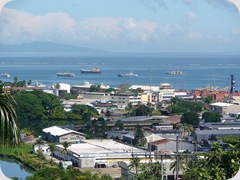
We recommend a walk around the dock area, the Suva municipal market is also a must, for the variety of exotic fruits and vegetables offered, and kava, fish, seafood and spices. In the market there is a multicultural environment with stalls offering snacks and Indian sweets colorful, and fruit drinks in glass containers.
Nadi
The third largest city in Fiji stands on the west coast of Viti Levi, with the mountains in the background. The local economy depends almost entirely on tourism and, although not the most attractive part of the country, it is a good place from which to organize the visit to the island. The tourist offer is very wide: from real economic places to sleep and eat to luxurious hotels like the Sheraton and the Regent. In the city there is a high rate of Hindu population, most are descended from four generations of workers who came to Fiji to work the sugar plantations. 
Among the places of interest, stands the temple of Sri Swami Siva Subramaniya in the extreme south of the main street. Visitors are welcome, and the only requirement is to visit that day was not consumed alcohol or non-vegetarian food. There is also a market for quality, offering the usual eclectic mix of Melanesians, Chinese and Indians. The main street of the market is crowded with restaurants, clothing stores, souvenir and duty-free. Nadi is a good place from which to organize other activities such as diving, golf to horseback riding, rafting, ride a motor boat or a microlight.
Mamanuca Group
The Mamanuca Islands are a handful of tiny islands, located near the west coast of Viti Levu, which can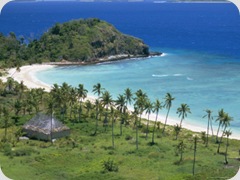 be reached by boat from Nadi to make a trip or to stay a few days, as provision of accommodation includes luxury hotels attractions typical backpackers. The island is very popular among tourists who want to practice diving, scuba diving, snorkeling, surfing or just want to lie on any of the extensive white sand beaches. The beautiful reefs and colorful fish make scuba diving snorkeling is one of the main attractions. Only a few islands, such as Monument and Monuriki, preserved areas of native forest, home to large numbers of birds and reptiles.
be reached by boat from Nadi to make a trip or to stay a few days, as provision of accommodation includes luxury hotels attractions typical backpackers. The island is very popular among tourists who want to practice diving, scuba diving, snorkeling, surfing or just want to lie on any of the extensive white sand beaches. The beautiful reefs and colorful fish make scuba diving snorkeling is one of the main attractions. Only a few islands, such as Monument and Monuriki, preserved areas of native forest, home to large numbers of birds and reptiles.
Sigatoka
Sigatoka is a small village on the southern coast of Viti Levu and 61 km south of Nadi and 127 km west of Suva. Situated on the banks of the second largest river in Fiji, its people live mainly on agriculture, but also acts of service to people of coastal hotels Reef. Among the attractions is the large market and a mosque, there are few places to sleep and eat economic. The most striking aspect of the people is the view of the 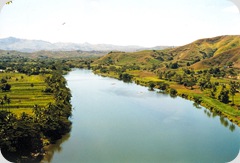 strange dream mansion that stands on the hill behind the village. Sigatoka is the ideal place from which to visit the giant sand dunes of Sigatoka, a short distance, the south coast and the valley of Sigatoka. This valley is a particularly fertile strip of land on which they are about two hundred sites, including Fort Tavuni formed by a series of defensive fortifications built on the land they were built in the eighteenth century by the village chief Maile Tonga Latemai. Also lie in the valley some of the best potters in Fiji.
strange dream mansion that stands on the hill behind the village. Sigatoka is the ideal place from which to visit the giant sand dunes of Sigatoka, a short distance, the south coast and the valley of Sigatoka. This valley is a particularly fertile strip of land on which they are about two hundred sites, including Fort Tavuni formed by a series of defensive fortifications built on the land they were built in the eighteenth century by the village chief Maile Tonga Latemai. Also lie in the valley some of the best potters in Fiji.
The highlands of Nausori
In the interior of Viti Levu Island, heading east from Nadi, lie the remote villages of the Nausori Highlands, with beautiful landscapes. The people of Naval is perhaps the most picturesque of Fiji. At present, most of the Fijian people are inclined to the use of precast concrete and corrugated iron for the construction of their buildings, but in Naval virtually all homes and buildings are traditional Bures, which rose about avenues and have a central promenade leading to a river. 
This is not an area much visited by tourists, so it is advisable to ask the village chief and ask permission to walk through the place and take some pictures. Sunday is the day of worship and often happens in families, it is appropriate to leave the tour for another time. Another place to make a worthwhile stop is the village of Buku, located further west. There is the possibility of staying overnight in villages, but much care is recommended forms.
Levuka
Levuka is located on the island of Ovalau, west of Viti Levu. During the British colonial government was the country's capital, but in 1882 it was moved to Suva, because of the limited area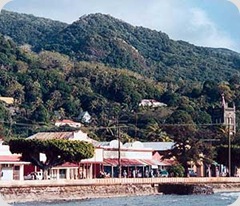 of Levuka, surrounded by mountains on one side and the sea to another. This city was the first European settlement in Fiji, and in 1806 she lived in sandalwood traders. Throughout the nineteenth century, Levuka has grown thanks to the visiting sailors and whalers, the arrival of settlers and the establishment of administrative centers of the colony. At the time of greatest splendor, there were 52 hotels in the city along Beach Street and the city had become a wild and lawless place. Today things have changed a lot, and Levuka is not what it was. Still, very well preserved colonial buildings and the state looks like a Wild West town. The population is comprised mainly of descendants of Fijian mixed with Europeans. The Pacific Fishing Company employs 1,000 people, almost one third of the local working population. At the southern end of Beach street, lie three huge rocks marking the place of
of Levuka, surrounded by mountains on one side and the sea to another. This city was the first European settlement in Fiji, and in 1806 she lived in sandalwood traders. Throughout the nineteenth century, Levuka has grown thanks to the visiting sailors and whalers, the arrival of settlers and the establishment of administrative centers of the colony. At the time of greatest splendor, there were 52 hotels in the city along Beach Street and the city had become a wild and lawless place. Today things have changed a lot, and Levuka is not what it was. Still, very well preserved colonial buildings and the state looks like a Wild West town. The population is comprised mainly of descendants of Fijian mixed with Europeans. The Pacific Fishing Company employs 1,000 people, almost one third of the local working population. At the southern end of Beach street, lie three huge rocks marking the place of 
Lovoni village, west of Levuka and Ovalau center, stands in the midst of a spectacular extinct volcanic crater. From Levuka, organizing guided tours to the people who cross the forest and pass by the tomb of a chief and by the strong Korolevu on a hill.
Lau Group
Located halfway between the main islands of Fiji to the west and the kingdom of Tonga, islands grouped most of the islets in the area. The islands, due to the proximity of Tonga, Polynesia there is a strong influence, as reflected in names, language, cuisine, decor, architecture and factions of its inhabitants. Southeast winds make the trip easy boat Tonga to Fiji, but not return. 
Vanuabalavu
is the largest island in the northern Lau group. In it, there is an upscale resort and an airstrip. The closest thing that exists in the island town is a Lomaloma, which has an economic house. Vanuabalavu to travel, it is necessary to apply for a permit to the Ministry of Foreign Affairs in Suva. The island is an ideal place to practice diving, which may be engaged in vacation packages. On the island of Kiabu, surrounded by a reef which it shares with the neighboring island of Yacata, there is also an upscale hotel. Kiabu is a private island for up to six people, offering activities such as windsurfing, sailing, hiking and visits to caves. 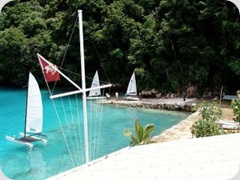
Between the islands of the southern Lau group highlights Lakeba, former meeting place between the people of Fiji and Tonga, also very popular in Europe before the establishment of the settlement of commercial Levuka. On the island there are several caves, among which Nabukete Oso, which means "too narrow for pregnant women." Tubou, on the southern tip of the island, is the provincial administrative center of Lau. It has a post office, a hospital, a telephone office and an economic government pension. Here lies the tomb of the powerful chief Elena Ma'afu Tonga, as well as the son of Fiji, Ratu Sir Lala Sukuna, the first Fijian to obtain a university degree from a foreign university.
Vanau Levu
Vanua Levu ( "long land) is the second largest island of the archipelago of Fiji,
Tunuloa Peninsula, also known as Natewa or Cakaudrove peninsula, has been linked to Vanua Levu by a narrow isthmus that forms the bay of Natewa west. We can see many birds, and hiking in the local bus or SUV. A gravel road crosses the peninsula to reach Darigala in the extreme northeast, crossing copra plantations, old villages and  stretches of forest. Buca Bay, on the eastern flank of the peninsula, it is common place to stop for ferries arriving or leaving the nearby island of Taveuni, for that matter, is a rather quiet island.
stretches of forest. Buca Bay, on the eastern flank of the peninsula, it is common place to stop for ferries arriving or leaving the nearby island of Taveuni, for that matter, is a rather quiet island.
South of the Buca Bay, lies the village of Dakuniba, home to some petroglyphs inscribed on a rock, of unknown origin and meaning. The small island of Rabi, located on the northeast tip of the peninsula is inhabited by Micronesians from Banaba (Ocean Island) in Kiribati. The beaches and reefs are unique to swimming or diving with a snorkel.
Fiji Activities
Fiji offers the opportunity to practice most outdoor activities, although some tourists prefer to simply lie idle on the beach and enjoy tropical cocktails. However, most 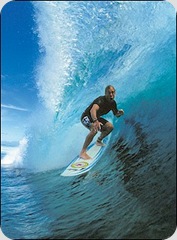 passengers who travel to Fiji in mind leads to bathe, dive or snorkel diving or other activities such as surfing, rafting, windsurfing and sailing. All the islands are surrounded by coral reefs that are ideal for scuba diving and snorkeling, however, sparse breaks for surfing, and there are too remote from the coast. Mamanuca Islands have some centers and surf good waves, but you need a boat to reach the reefs where they break. On the coast of Viti Levu, there are a few good breaks, like they have near Sigatoka and the Suva lighthouse, and the island of Yanuca.
passengers who travel to Fiji in mind leads to bathe, dive or snorkel diving or other activities such as surfing, rafting, windsurfing and sailing. All the islands are surrounded by coral reefs that are ideal for scuba diving and snorkeling, however, sparse breaks for surfing, and there are too remote from the coast. Mamanuca Islands have some centers and surf good waves, but you need a boat to reach the reefs where they break. On the coast of Viti Levu, there are a few good breaks, like they have near Sigatoka and the Suva lighthouse, and the island of Yanuca.
The options on land are also varied, such as cycling, mountaineering and horse riding; other "activities" are more cerebral birding and visiting archaeological sites. Fiji are highly focused on tourism and therefore abundance of them in places that rent equipment and provide courses or routes a day.
Fiji History
By the year 1500 BC, arrived in Fiji the Lapita people, early settlers of the islands and mostly from other parts of Melanesia. At first, living on the coasts and subsisted on fishing, however, back in 500 BC began farming, which caused a significant increase in population and development of a tribal feudalism. 
Around the year 1000 AD saw the invasion of the islands by Polynesians from Tonga and Samoa, involving the Melanesians in large scale wars. Cannibalism was common. The population was divided into large family groups called mataqali, who lived in fortified towns and were run by polygamists chiefs, whose office was hereditary (turaga-ni-koro). Marriages between members of different tribes were a very important link between communities. However, rivalries and disputes were not uncommon, and fighting between various clans faced members of one family.
The first European to sight the Fijian islands was Abel Tasman, on his way to Indonesia in 1643. Tasman managed to avoid the treacherous reefs northwest of Vanua Levu and Taveuni, but his stories about the dangers kept other sailors away for another 130 years. In 1774, James Cook led the next visit to the islands, specifically vato, Lau group. Fifteen years later, he arrived on their shores Lieutenant William Bligh, having sailed to drift in a small boat with 18 crew after the mutiny occurred on board HMS Bounty. In his journey, crossed the Lau group of islands and large islands of Viti Levu and Vanua Levu, whose waters are still known today as the "waters of Bligh."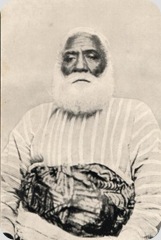
In the early nineteenth century, several traders landed in Fiji for sandalwood and beche-de-mer, very succulent sea cucumbers prized in Asia. Thanks to them, the Fijians had access to metal tools, to snuff, the cloth and weapons. The consequences were dramatic: violent battles between clans and a rapidly changing society of the islands, which also played a key role the survivors of shipwrecks, sailors and deserters who had been convicted of escape in British penal settlement Australia. Many had the misfortune of knowing first hand why the islands were known as the "cannibal islands", but a few, including the Swedish Charles Savage, managed to fully integrate into the highest grade of the feuding Fijian clans, working as interpreters of heads, brokers, carpenters or soldiers.
Other prominent invaders of the mid-nineteenth century were the military and missionaries from Tonga England. The latter sought to turn the heads of tribes, without much success. In 1867, Reverend Thomas Baker was eaten, your foot is on display at the museum in Fiji. The people of Levuka on the island of Ovalau, became an important commercial port in the South Pacific that are disputed by the Americans, French and British, and each country where suspicion of the intentions of the other imperialist. Levuka became a lawless town in 1847, relations with the villagers came to his most critical point, which culminated in the burning of the settlement. 
In 1871, Cakobau, proclaimed King of Fiji, it was proposed the creation of a Western-style government which failed after only two years of existence. In 1873, the British Consul in functions J. B. Thurston laid the foundations for the annexation of the islands to his country, which finally took place on October 10, 1874, the date on which Fiji was proclaimed a British colony, with its capital in Suva. Governor Sir Arthur Gordon sought out the colony self-sufficient in economic terms through plantation crops such as cotton, copra and sugar cane. Productivity has skyrocketed thanks to the recruitment of workers from India to Fiji saw a way to escape poverty in their country. However, life on the plantations was a mixture of abuse, murder, suicide, rape and disease. Was abolished in 1919 when this type of recruitment, had more than 60,000 Hindus in the islands. The Indian community, who had been forbidden to own land, was devoted to small business, trade and bureaucracy, and long-term leased farms. The Australians managed to dominate the local economy through sugar production and gold mining, while Europeans manipulated the racial tensions between Fijians and Indians in an effort to maintain the complete dominance of the economy and the politics of islands.
After World War II, to which Fiji has sent 8,000 soldiers to fight against Japan in the Solomon Islands, Fijians and Indians assumed a greater political awareness, despite the continuing racial segregation. On October 10, 1970 Fiji gained independence, established a British-style political system and organized political parties in their racial lines. In the 1987 elections, won a victory unstable coalition accused of being dominated by Indians, despite the fact that both the prime minister as the majority of his cabinet were Fijian government. Followed a series of demonstrations and in the meantime, the extremist movement Taukei was devoted to destabilize the new government. Indian business owners suffered a wave of attacks, while the Indian community was the victim of violent attacks. A month later, on May 14, 1987, Colonel Sitiveni Rabuka seized parliament and took power after a bloodless coup. In October of that year, Fiji was expelled from the Commonwealth. The 1991 elections to give the victory to Rabuka, who left his military career to devote himself exclusively to politics. To soften the hard image of his government conducted a series of concessions to workers and unions. 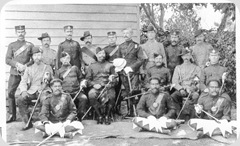
In elections held in 1999, won for the first time in history, a descendant of Indian prime minister, Mahendra Chaudhry. Among its measures include land reform, which indigenous Fijians interpreted as a threat to their possessions, and a bill on social justice, which reduced government programs for indigenous people. Resentment of Fijians are concentrated around the Taukei movement and, after months of protests against the government, a coup led by George Speight's mandate ended with Chaudhry in May 2000. Backed by a private army of 100 men, Speight stormed parliament and took hostage more than thirty parliamentarians to demand a new constitution that would guarantee political supremacy for indigenous minority. Finally, Speight and his followers were arrested, thanks to the weight of international pressure and the country itself. After the parliamentary elections in 2001, Laisenia Qarase was appointed prime minister. Whilst the economy begins to improve and tourists back to Fiji, and continuing racial problems do not seem to be solved in the short term.
Fiji Culture and People

The dance is still very important in the islands, and the narrative meke performances are based on strong oral traditions. The dances have been passed down from generation to generation, and said that the bodies of the dancers are occupied by spirits of another world. The mekes are interpreted during special events such as births, deaths, calls to war, marriages and exchange of properties. In wartime, men represent cibis with spears and clubs, while women represent or give Wates, dances humillarían sexually enemy captives. In Indian communities, are still taught the traditional dances.
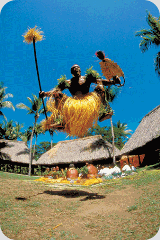
Fijian missionaries introduced hymns and choral singing, so the church singing in the islands are really beautiful. Among the best known local music contained Seru Serevi, Danny Costello, Michelle Rounds, Karuna Gopalan, Laisa Vulakoro, freelancers and the Black Roses. In stores you can buy tapes of local music. Among the Indian population of Fiji is very popular music of the movies known as "Bollywood", which are nothing other than Indian melodramas, the music of local bands tend to interpret these songs. In the Indian cultural centers, both representations as music lessons are taught in traditional music india, formed by a group of vocal, harmonium, tabla and sitar.
Fiji has been famous for its pottery since the Lapita people began to market their products by the South Pacific, thousands of years ago. The most famous contemporary potters are Tugea and Dian Taraivini Wati, whose works are exhibited in the museum in Fiji. The wood carving remains critical, largely due to strong demand for tourist souvenirs to take home. These pieces stand out war clubs, spears and forks of cannibals; containers for drinking or tanoas still part of daily household use of the Fijians. The size in the areas of influence Polynesia (settlers from Tonga or Samoa) is characterized by inlays of shell or bone. The tissue of bark, known as Fiji masi was traditionally produced around the Pacific with the name of cover. Ceremonial clothing, belts, adhesives and turbans are made of masi and formerly decorated with motifs symbolic ocher oxide and carbon black. The fabric is made from the bark of the mulberry, and production is very laborious. Traditionally, the mass was given away at very ornate ceremonies, and who had one sample had high prestige within the community. Also, the making of mats and baskets made from the leaves of the breadfruit tree (pandanus) is a deeply rooted tradition that still learning and
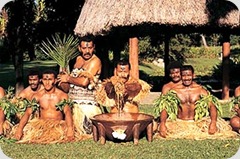 developing the girls from the villages. There are a variety of styles and colors, which are obtained using techniques such as scraping pandanus leaves, his burial in mud or cooking with other plants. The edges of the mats were decorated with parrot feathers, now they have been replaced by strands of wool yarns and bright colors.
developing the girls from the villages. There are a variety of styles and colors, which are obtained using techniques such as scraping pandanus leaves, his burial in mud or cooking with other plants. The edges of the mats were decorated with parrot feathers, now they have been replaced by strands of wool yarns and bright colors.Fiji has a small but strong community of writers, among them Joseph Veramu, which has published a collection of short stories under the name The Black Messiah, and a novel about teenagers in Suva, Moving Through the Streets. Among the playwrights include Jo Nacola, with works like I Native No More, and Vilsoni Hereniko. Also noteworthy is the writer of short stories Marjorie Crocombe. There are Fijians of Indian authors who write both in Hindi and in English as Subramani, Satendra Nandan, Raymond Pillai and Prem Banfal; the central theme of his works is unfair and difficult situation of workers recruited for the plantations.
Fiji map







All travel has its advantages. If the passenger visits better countries, he may learn to improve his own. And if fortune carries him to worse, he may learn to enjoy it. Cheap Flights to Abuja
Greeat blog